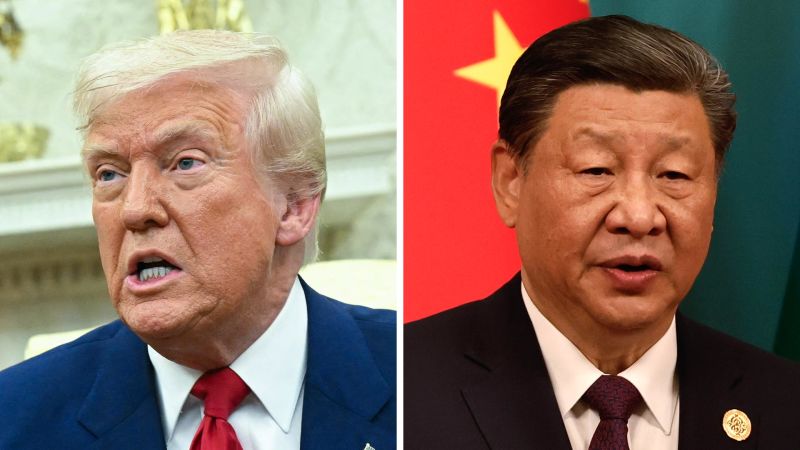On Thursday, President Donald Trump concluded a highly anticipated 90-minute telephone conversation with Chinese leader Xi Jinping, expressing optimism about the potential resolution of ongoing trade tensions between the two nations. Following the call, Trump characterized the discussion as “very good,” and committed to arranging subsequent meetings with his economic team for further negotiations. Trump also revealed that he and Xi extended invitations for each other to visit their respective countries, marking a move towards friendlier diplomatic relations.
The conversation was largely focused on trade, avoiding contentious geopolitical issues such as the situations in Iran and Ukraine. Trump noted in a post on Truth Social that the dialogue yielded a “very positive conclusion for both Countries,” a sentiment that may reflect a desire to put the contentious past behind them and foster cooperative trade relationships. This call followed a prolonged period of inactivity in communications, contributing to a sense of apprehension about the increasing divide between the world’s two largest economies.
During their dialogue, Xi emphasized the need for mutual respect and cooperation, urging both nations to pursue “win-win results” and advocating for the removal of restrictions that the U.S. had imposed on China. This perspective is vital to bridging the chasm that has developed due to escalating trade disputes, with Xi stressing the importance of recalibrating their diplomatic and economic relations. He metaphorically described the complex U.S.-China relationship as a giant ship that requires careful steering towards a more fruitful direction.
In the weeks leading up to this call, tensions escalated as the two countries evaluated a 90-day trade truce that initially brought relief from partisan tariff escalations. Trump had recently accused China of breaching the truce, a claim that Beijing vehemently refuted. Instead, Chinese officials countered that the U.S. had undermined the spirit of the agreement with its actions. The complexity of these negotiations was highlighted by Trump’s focus on the controversial topic of rare earth minerals, an area where he claimed progress had been made, signaling a potential thawing of restrictions that had been a point of contention.
Trump sought clarity on rare earth issues in his communications with Xi, stating that “there should no longer be any questions respecting the complexity of Rare Earth products.” He indicated that a meeting between the economic teams of both countries would be scheduled soon, thus laying the groundwork for a more robust and collaborative trade dialogue. Trump also mentioned that Xi extended an invitation for both him and First Lady Melania Trump to visit China, to which he reciprocated the gesture, cultivating a more personal diplomatic approach amidst broader economic issues.
In recent days, U.S. officials signaled that this call could help catalyze further trade discussions that had stalled since initial agreements in Geneva. Xi reiterated the importance of respecting the Geneva consensus, stating that the U.S. should recognize existing progress while removing negative measures against China. A cooperative framework, established through ongoing economic and trade consultations, was strongly advocated during the call, where both sides stressed the importance of equality and mutual respect.
However, the dialogue wasn’t all smooth sailing. Xi specifically urged prudence regarding the sensitive Taiwan issue, warning against moves that could escalate tensions between the two nations. This aligns with China’s longstanding view of Taiwan as a territory under its sovereignty, despite its de facto independence. The conversation was also framed within the context of the unresolved and strained trade relationship that both countries have navigated since earlier agreements proved difficult to adhere to amidst external pressures like the COVID-19 pandemic.
It is worth noting that past communications had been approached cautiously by both sides, with Chinese officials hesitating to engage due to concerns over Trump’s unpredictable diplomatic behavior. Events such as unexpected appearances or remarks during meetings with other international leaders have kept Chinese officials wary. Nonetheless, Trump views the establishment of a new trade agreement with China as part of his broader trade policy agenda and a necessary continuation of his efforts from his previous term in office.
As this story continues to evolve, updates will likely emerge regarding anticipated meetings and the general trajectory of the U.S.-China trade relationship. The dialogue represents an essential juncture, one that could redefine future interactions and lead to tangible resolutions in what has become a complex and multifaceted relationship between Washington and Beijing.



